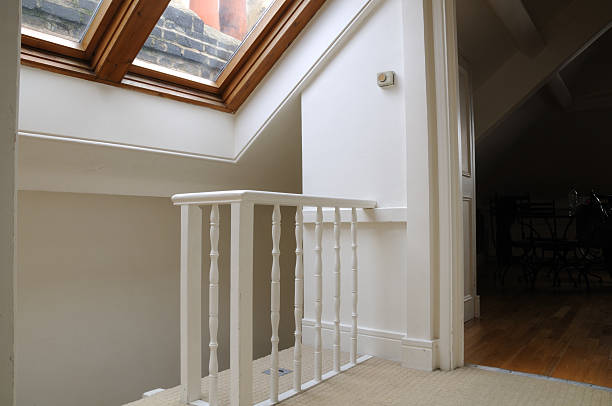The concept of ventilation is very easy to understand. The straightforward explanation of ventilation is that it involves the flow of fresh air through a system of intake and exhaust. Ventilation involves the movement of outdoor air into a building or a room. The fresh indoor air is then distributed within the building or room.
The importance of ventilation in the house can not be overstated because, for a start, it helps to reduce the in-house temperature. And for your roof, proper ventilation will keep your metal roof functioning for a long period.
It wasn’t until the early 20th century that the importance of roof ventilation was eventually documented. This is because back in the day, most house roofs often experience building condensation due to poor ventilation on the roof, which often reduces the roof’s life span drastically. Organizations such as Forest Product Laboratory and the American Society of Heating, Refrigerating & Air-Conditioning Engineers were the first to recognize this problem and proffered a solution: roof ventilation.
Now that you know what ventilation is and what it does in the house. It is time for you to understand why roof ventilation is essential.
How Roof Ventilation Works
Roof ventilation is essential for the house because it allows air to flow through the attic. This airflow ensures the roof doesn’t overheat or cause condensation due to moisture. Typically, ventilation can be done via two methods; they include: mechanical and natural. The former requires a power source before functioning, while the latter doesn’t. Instead, it makes use of the wind effect and stack effect to generate airflow through the attic.
Importance Of Roof Ventilation
As previously stated, the importance of proper ventilation to your roof simply can’t be overstated. Therefore, in this section, we will do justice to this by explaining some of the importance of roof ventilation that you may not know.
1. Ventilation Helps to Prevent Condensation, Mold, and Rot
This is arguably the most important benefit of ventilation because proper roof ventilation helps prevent condensation, which may lead to rot and mold. You may not know this, but the house you live in often produces far greater moisture than you can imagine. For example, when you bathe, cook, shower, do laundry, or do anything that involves hot water, you indirectly release a lot of moisture into the house/ceiling. However, unless you have a vapor barrier in place, the moisture released won’t go anywhere; instead, it will go up to the roof ceiling, and that’s how condensation starts.
Therefore, proper ventilation in your roof and attic space will help keep your insulation dry and prevent it from getting damaged by condensation or agents.
2. Ventilation Will Help Increase the Lifespan of Your Roof.
Although this is pretty much self-explanatory, if you want to increase the longevity of your roof and attic, you have to provide proper ventilation. As we mentioned earlier, a roof without ventilation will be subjected to rots, condensation, and mold. And as a result of this, the lifespan of the roof will reduce.
When a roof doesn’t have a proper ventilation system, there will be an extreme build-up of heat which will then cause the attic to become extremely hot. Also, this same heat will cause damage to the wood framing, underlayment, rafters, and other house roof components. Therefore, ensuring that your roof is properly ventilated is the first step toward prolonging the lifespan of your roofing system.
3. It Helps to Reduce Indoor Temperature
When your home roof is properly ventilated, it will allow hot air to escape while cool air comes in to replace it. This will help to regulate the temperature of the entire house and ensure that your home is comfortable in every season and weather condition.
4. Proper Roof Ventilation Helps to Increase Energy Efficiency
Properly ventilating your roof and attic will ensure that the amount of money you are supposed to spend on your house cooling system is reduced greatly since ventilation allows heat to escape the attic.
Here is how it happens: your in-house temperature will do likewise when the temperatures outside begin to rise. So, if, unfortunately, your roof is not properly ventilated, the in-house heat will remain trapped in your house’s attic or roof, causing your air conditioning to work more than it ought to. In short, the greater the heat, the more you utilize your air conditioning to cool your house.
And conversely, when your roof is properly ventilated, your home’s cooling and operating costs will be considerably lowered.
There is another thing called a cool roof system. A cool roof is like, but not entirely like, every other roofing material. Unlike other standard roofs, a cool roof typically creates a higher solar reflectance and thermal emittance. Aside from the fact that this type of roof material will help increase your home’s energy efficiency, your home cooling costs will also be considerably reduced when combined with proper attic ventilation.
How can we help you?
As previously mentioned, the importance of having a well-ventilated attic and roofing simply can’t be overstated. Aside from the fact that a well-ventilated roof will ensure that your home feels more comfortable, it will also ensure that your roof lasts for a very long time while still performing at the highest level.
However, if you have questions or more clarifications about your home roofing and the importance of ventilation to the roof and your attic, don’t hesitate to contact Shoreline roofing today.
We can help you with all your roofing needs.

